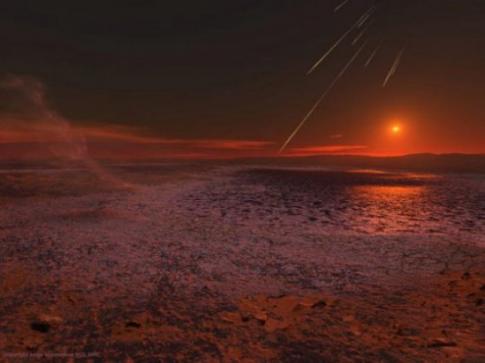Water on Mars

In our solar system, after Earth, Mars may have a hospitable climate favourable to life, the basic requirement being the presence of water.
After several attempts, researchers have successfully studied the composition of Mars' northern ancient crust. Much like the southern crust, the various hydrated clay minerals, mostly Fe/Mg phyllosilicates, indicate a high likelihood of an ancient environment that sustained surface and subsurface liquid water on the red planet. The paper, published online in Science (“Detection of hydrated silicates in crustal outcrops in the northern plains of Mars,” by J. Carter et al.), indicates that the hydrated minerals of ancient crustal rock in the northern hemisphere were formed by aqueous alteration at a high temperature and in a subsurface environment.
The ancient crustal rock in the northern plain, unlike the one in the southern hemisphere, has remained unexplored so far because it is covered by a blanket of lava and sediments that is hundreds of metres thick. This blanket has been punctured at several points by huge craters created by asteroid impacts exposing the ancient crust. Using the images taken by sensors on board the European Space Agency's Mars Express and the National Aeronautics and Space Administration's (NASA) Mars Reconnaissance Orbiter, the authors found hydrated minerals in nine of the 91 craters studied. The composition of the hydrated minerals strongly suggests that they were formed prior to asteroid impact and crater formation. In fact, being identical in composition with the phyllosilicates found in the southern hemisphere, the impacting asteroids could not have played a role in their formation.
In our solar system, after Earth, Mars may have a hospitable climate favourable to life, the basic requirement being the presence of water. The presence of water-ice clouds, similar to the cirrus clouds on Earth, in the atmosphere of the red planet, and their precipitation toward the ground were reported last year. The latest discovery indicates that Mars was once altered on a global scale by liquid water more than four billion years ago. But the close proximity of the hydrated silicates to unaltered olivine mineral, which is easily modified by water, suggests that the minerals were exposed to water only for a geologically short period of tens of million to hundreds of million years. It could also mean that they were not exposed to large bodies of water. Primary mineral hydration would have occurred within the crust partly in the subsurface. This is contrary to the views of a number of scientists that a shallow ocean covered the northern hemisphere after the craters were filled by lava and sediments. Hindu News




 del.icio.us
del.icio.us Digg
Digg

Post your comment